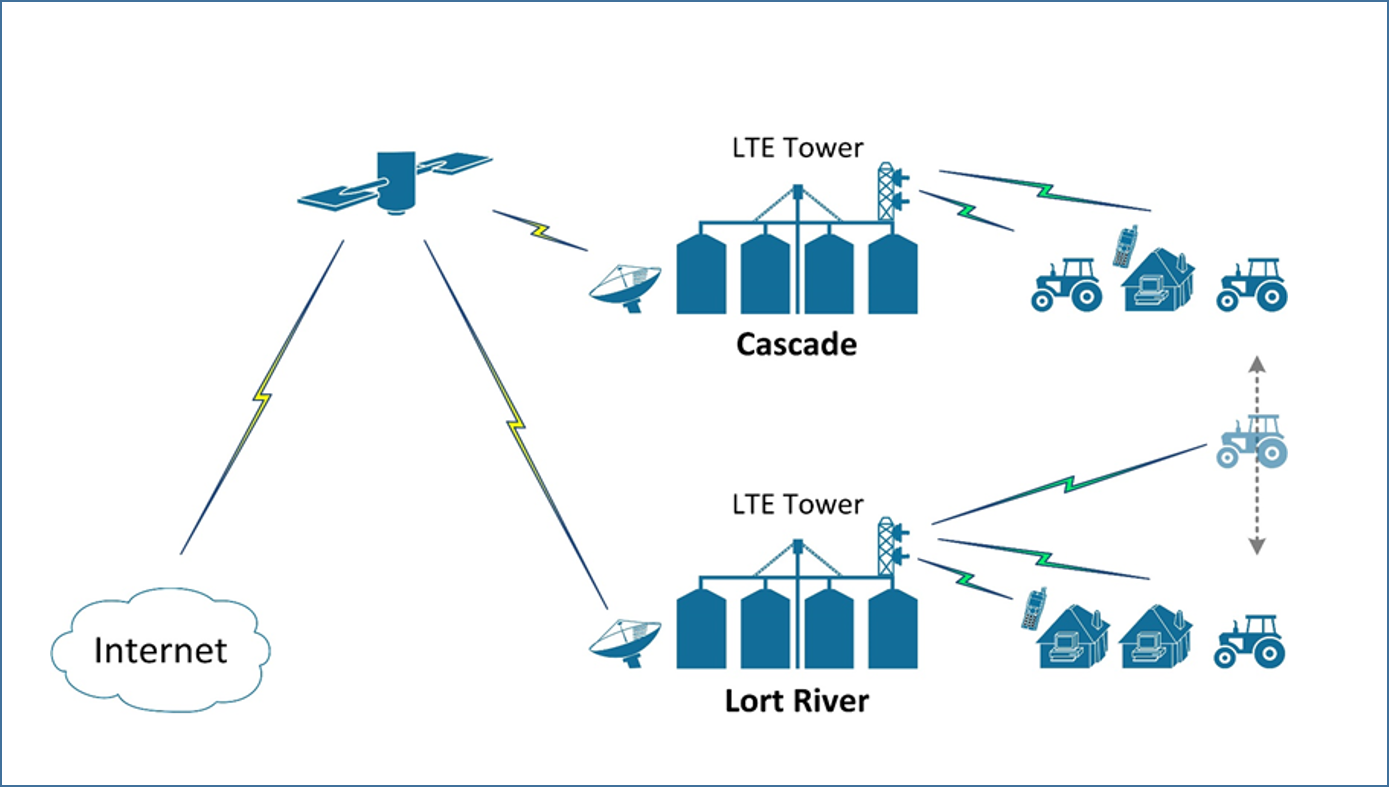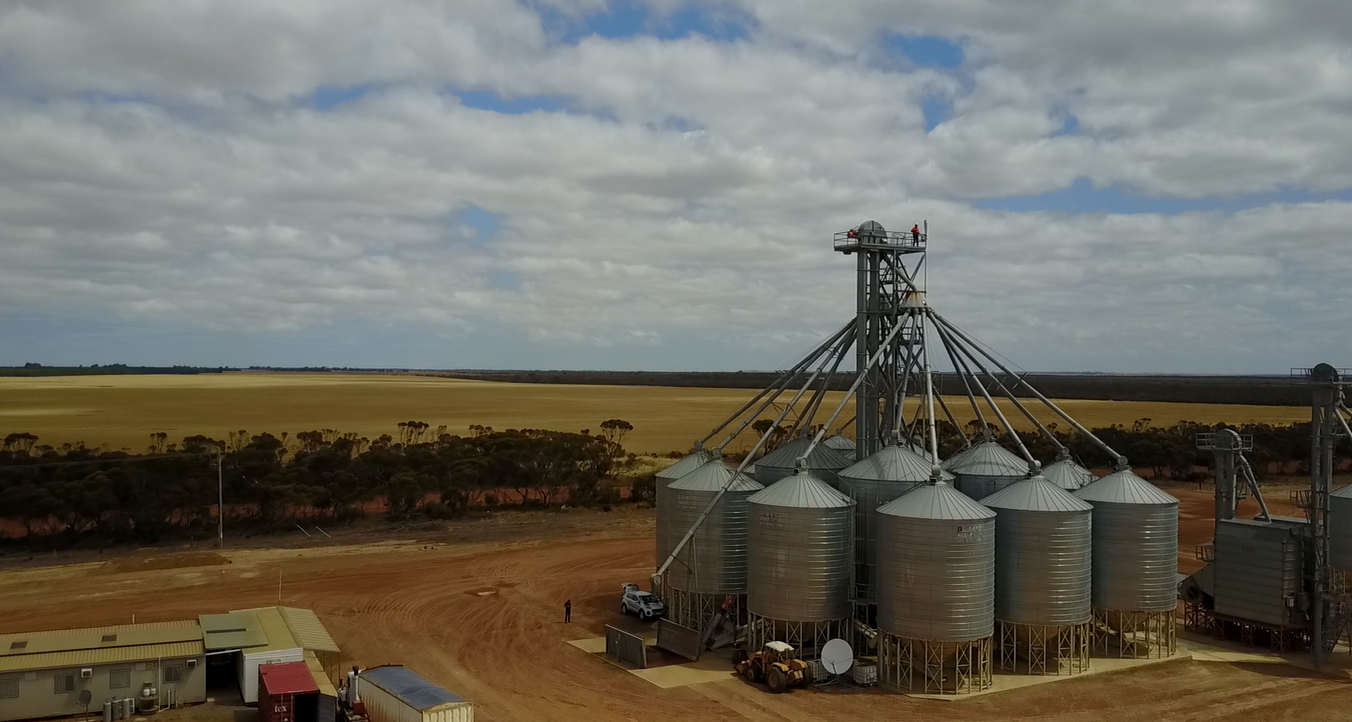Delivering Private LTE to the emerging remote Agribusiness sector
Our Current Focus: WA Wheat Board – Delivering Private LTE
URSYS, Optus Satellite, and SEPWA (South East Premium Wheatgrowers Association) have deployed 2 LTE sites, one at Lort River and one at Cascade. The objective is to demonstrate the power and flexibility of LTE combined with Optus Satellite by delivering a high-speed community network distributed over a large service area and backed by a fast 5/2 mbps unlimited satellite connection.
Both of the sites have a standard configuration consisting of a satellite connection and an LTE “EPC” (router) and radio unit. The LTE networks at both sites are part of the same larger network, meaning that devices are able to utilise both towers depending on their proximity to one or the other.
The satellite connection is delivered by the Optus D2 satellite utilising the URSYS iDirect VSAT platform. The 5/2 mbps satellite service was configured as a “pooled” service that can have multiple sites (or even customers) contributing to and sharing the same pool of satellite capacity. This approach was chosen to demonstrate the potential for more users to join the service. If this was to happen there would be a net benefit to everyone from an increase in shared satellite capacity, resulting in higher peak download speeds and lower cost.
Given the farming context, LTE was the logical choice given the large service areas that need to be covered. LTE excels at providing high speed service over great distance, with some LTE cells providing a 100km cell radius from a tower. The LTE tower is being operated at relatively low power due to the operating license issued, however sites as far as 12km away from the tower are achieving stable and consistent performance.
Indoor, outdoor, and vehicular modems have been provided to the LTE network and distribute broadband access as WiFi to users.

Long-Term Evolution (LTE) is a high-speed point-to-multipoint wireless technology used by millions of people on their mobile phones every day to get online. Typically these kinds of technologies have been limited to public telecommunications networks due to the cost and complexity of implementation; however both cost and complexity have been reduced with the advent of specific small scale LTE solutions like the one here.
It has focused largely on broadband distribution LTE, as it is an incredibly powerful technology for enabling “smart farms” by allowing IoT/M2M style telemetry and automation hardware to operate over a wide service area on a standard protocol at very low power.
SEPWA, URSYS, Optus Satellite and the project donors; Esperance Shire, Department of Primary Industries and Regional Development and the Goldfields-Esperance Regional Development Commission, are looking forward to obtaining real life experience of this type of technology and its use in the Agricultural industry.
CONTACT@URSYS.COM.AU for more information.

